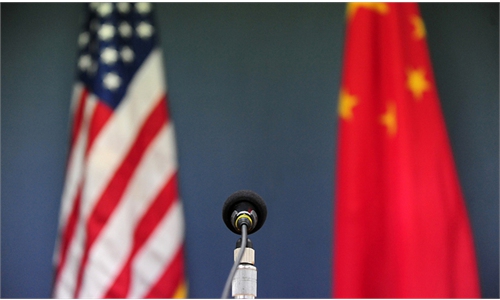US’ widening trade deficit with China defies its decoupling efforts
Criticism of China over phase one agreement baseless: analysts

China-US trade
The US' trade deficit with China widened by more than $350 billion in 2021, defying a multi-year relentless campaign by Washington to reduce imports from China, including through protectionist moves such as slapping extra tariffs on Chinese products and demanding companies to set up manufacturing bases in the US.
Amid the rising deficit, US officials have in recent days stepped up accusations against China over the latter's implementation of the phase one trade agreement. However, such attacks are misdirected and baseless, analysts said, noting that the rise in deficit is the result of the US' own economic structure and that China has been overcoming various challenges to fulfill its commitment.
According to statistics released by the US Department of Commerce on Tuesday, US exports to China grew substantially by 21.4 percent year-on-year to $151.1 billion in 2021. But due to the US' massive import from China, the US' trade deficit with China still increased to $355.3 billion in 2021, compared with $310.3 billion in 2020.
The overall US trade deficit increased 27 percent in 2021 to an all-time high of about $859.1 billion, up from $676.7 billion in 2020, with the deficit with China accounting for one-third of the total.
Chinese customs data showed earlier that the China-US trade deficit amounted to about $396 billion in 2021.
The trade deficit numbers are the latest solid evidence that the US is highly dependent on other countries, particularly China, for many products, although it's something that many US officials have kept grumbling about and tried to reverse, using anti-free trade tactics, analysts noted.
"The US' trade deficit with China is something decided by the two countries' industrial structures - of China being an expert at manufacturing and the US reliant upon consumption stimulation. It will not be changed by any trade policies or personal will," Tian Yun, former vice director of the Beijing Economic Operation Association, told the Global Times on Wednesday.
The COVID-19 pandemic has further cemented the trend, as the pandemic fuelled US demand for home-related products like toys and pet goods, most of which are Chinese factories' strong suit, analysts pointed out.
"The US government has been mounting efforts to direct manufacturing back to the US, or at least out of China. So far, we can see that the efforts have been to no avail," Gao Lingyun, an expert at the Chinese Academy of Social Sciences, told the Global Times on Wednesday.
The widening trade deficit between China and the US does not run counter to the fact that China has been actively fulfilling its pledge under the phase one deal by purchasing US products, especially in agriculture, experts and industry sources said, noting that the 21 percent increase in US exports to China is sufficient proof.
For example, China's purchases of US soybeans amounted to more than $14 billion in 2021, almost on par with 2020 levels, Zhang Xiaoping, country director for China at the US Soybean Export Council (USSEC), told the Global Times.
He said that the volume of soybean purchases by China has shrunk by about 8 million tons, for reasons like Panama Canal congestion and the impact of hurricanes, but a price surge has pushed the total trading value back to a normal level.
"The trade deal has helped bring China-US soybean trade back to its mutually beneficial nature, dispelled Chinese companies' worries about purchasing US soybeans, and caused China-bound soybean exports to recover quickly," Zhang said. "The US soybean industry cherishes the partnership it builds with Chinese industries."
China's imports of beef from the US also expanded to 83,000 tons in the first eight months of 2021, nine times the amount in the same period a year earlier, Chinese customs data showed.
Still, in what appears to be a concerted effort, several US media outlets have published stories about China "falling short of" meeting its pledges under the agreement.
Gao noted that the trade deal is mutually beneficial and both sides are eager to implement it; however, there have also been some unexpected factors, including the pandemic, that must be taken into consideration.
"China has not gone back on its promises in terms of implementation or sincerity in implementing the trade deal," he said. "The two sides are discussing and researching the formulation of a plan that will benefit future implementation of the deal."
Apart from unexpected factors, the US has also not created a favorable environment for the implementation of the deal, as it imposed restrictions on various products and still charges tariffs.
Tian said that the US should provide a normal trade environment to help facilitate the deal's implementation.
"Without the pandemic crisis, during which the US has led China-US relations to deteriorate, there should have been no difficulties for China to meet the import goals set in the trade deal," he said.


